Recent Posts
How to Assess the Extent of Fire Damage in Your Home: Expert Tips from SERVPRO
12/18/2024 (Permalink)
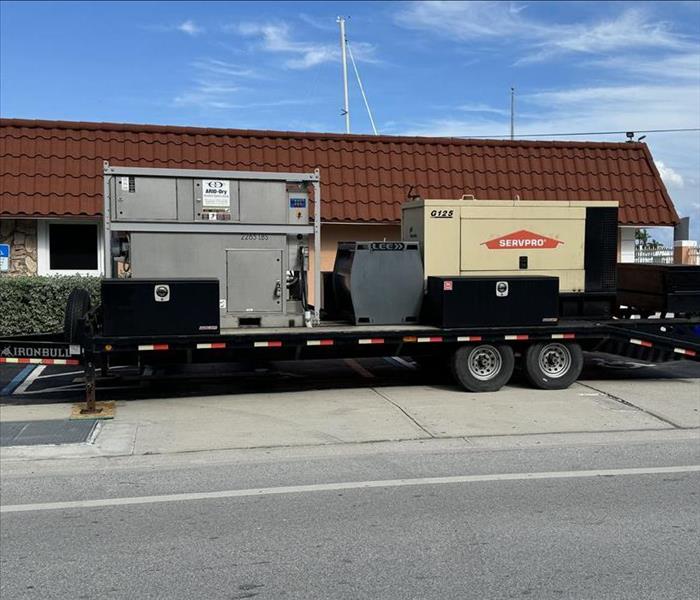 Explore how to assess fire damage in your home, using expert insights from SERVPRO.
Explore how to assess fire damage in your home, using expert insights from SERVPRO.
Experiencing a fire in your home can be devastating, but the process of recovery starts with properly assessing the extent of fire damage. A thorough assessment is crucial for understanding the full scope of the destruction and planning the restoration process. Fire damage can extend beyond what is immediately visible, affecting the structural integrity of your home, personal belongings, and even air quality.
According to the National Fire Protection Association (NFPA), there were 356,500 home structure fires in 2020, causing $7.3 billion in property damage source. This underscores the importance of a comprehensive assessment to ensure all damage is identified and addressed. In this blog, we’ll explore how to assess fire damage in your home, using expert insights from SERVPRO®.
Step 1: Ensure Safety Before Assessing Damage
Before you begin evaluating the fire damage in your home, safety should be your top priority. Fires can weaken the structural integrity of a building, and lingering hazards such as smoke, soot, or water damage may still pose risks. Here’s how to ensure a safe environment:
- Wait for Clearance: Only enter your home after the fire department or another authority has deemed it safe.
- Use Protective Gear: Wear gloves, a mask, and protective clothing to avoid exposure to harmful debris and soot.
- Check for Structural Damage: Be cautious of weakened floors, ceilings, or walls that could collapse due to fire damage.
Step 2: Assess Visible Structural Damage
Once it’s safe to enter your home, begin by inspecting the visible structural damage. Fires can destroy key parts of a building’s infrastructure, compromising its overall stability. Focus on the following areas:
- Walls and Ceilings: Look for charring, cracks, or warping in the drywall or plaster. Damage here may indicate that the fire reached critical areas, which could require significant repairs or even reconstruction.
- Floors: Inspect the flooring for visible burn marks or warping. In some cases, floors may appear intact but could be structurally compromised beneath the surface.
- Roof and Attic: If possible, check for visible damage to the roof, such as burned shingles or holes. Fires often spread upward, making attics and roofs vulnerable.
Step 3: Evaluate Smoke and Soot Damage
Even if the fire itself was contained in a specific area, smoke and soot can permeate the entire home, affecting walls, ceilings, furniture, and even ventilation systems. Smoke damage is not always visible, but it can lead to long-term issues if not properly addressed.
- Walls and Surfaces: Check for soot stains on walls, ceilings, and other surfaces. These stains are often sticky and can spread easily, so handling them requires care.
- Furniture and Fabrics: Upholstered furniture, curtains, and rugs can absorb smoke, causing lingering odors and discoloration. Even items that appear untouched by flames may require professional cleaning to remove smoke damage.
- Air Ducts and HVAC Systems: Smoke can infiltrate ventilation systems, circulating throughout the home. Have your HVAC system professionally inspected and cleaned to prevent future air quality issues.
Step 4: Inspect Water and Mold Damage
In many cases, fire damage is accompanied by water damage from firefighting efforts. Standing water, soaked materials, or lingering moisture can lead to further complications, such as mold growth.
- Look for Standing Water: Water used to extinguish the fire can pool in low areas or soak into walls, floors, and furniture. If water is left untreated, it can lead to mold growth and additional structural damage.
- Inspect for Mold: Mold can begin to grow within 24-48 hours in moist conditions. Pay close attention to damp areas, particularly in basements, attics, and bathrooms, where water may have been collected.
Step 5: Take an Inventory of Personal Belongings
While structural damage is a significant concern, personal belongings such as furniture, electronics, and sentimental items may also be affected by fire, smoke, and water damage. It’s important to document the damage to these items for insurance purposes.
- Photograph Damage: Take photos of all affected areas and items before moving or cleaning anything. This documentation will be essential for your insurance claim.
- Separate Salvageable Items: Some items, such as electronics or artwork, may be salvageable with professional cleaning or restoration services. Keep these items separate from items that are beyond repair.
Step 6: Consult with Fire Damage Restoration Professionals
While a DIY assessment can help you understand the extent of the damage, professional restoration experts like SERVPRO are trained to conduct thorough evaluations and identify hidden damage. Our team uses advanced equipment and techniques to restore both the visible and hidden damage caused by fires.
Why Professional Assessment Is Critical:
- Advanced Tools: SERVPRO professionals use tools like moisture meters and thermal imaging cameras to detect hidden water damage and structural issues.
- Thorough Cleaning: We handle all aspects of fire restoration, from removing soot and odors to addressing water damage and restoring structural integrity.
- Insurance Assistance: We work closely with your insurance provider to document the damage and ensure a smooth claims process.
Final Thoughts: Why Comprehensive Fire Damage Assessment Is Crucial
Assessing the extent of fire damage in your home is a critical first step toward recovery. From visible structural damage to hidden smoke, water, and mold issues, a thorough evaluation ensures that all areas are properly addressed during the restoration process.
At SERVPRO, we offer expert fire damage restoration services that cover every step of the cleanup and repair process. If your home has experienced a fire, don’t hesitate to reach out to our team of professionals for a detailed assessment and fast, effective restoration solutions. We’re here to help you get back to normal as quickly as possible.
How Can I Keep My Employees Safe During Mold Removal? Expert Tips from SERVPRO®
11/13/2024 (Permalink)
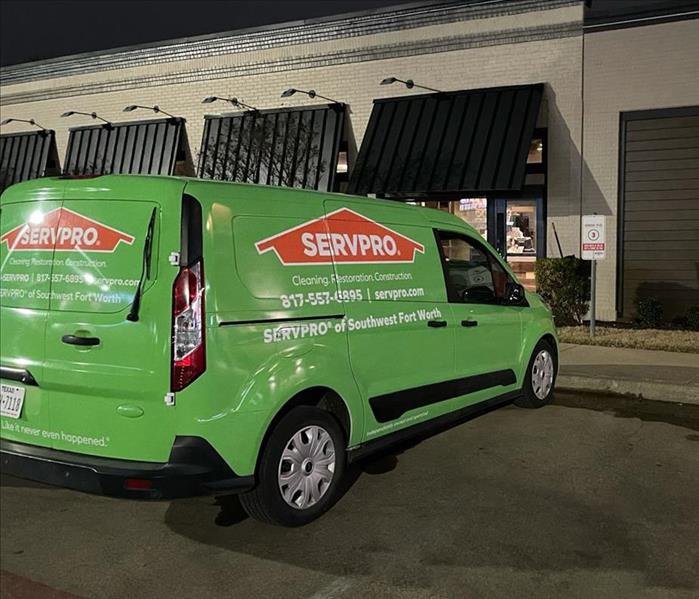 As an employer or business owner, it's your responsibility to protect your team during the mold remediation process.
As an employer or business owner, it's your responsibility to protect your team during the mold remediation process.
Mold removal in the workplace in Arlington, TX, can present challenges, especially when it comes to ensuring the safety of your employees. Mold can develop in areas with moisture and poor ventilation, and if left untreated, it can affect your business's structure and day-to-day operations. As an employer or business owner, it's your responsibility to protect your team during the mold remediation process.
In this blog, we’ll share expert insights on how to keep your employees safe during mold removal, as well as preventative measures to minimize future mold risks.
Mold in Workplaces: A Growing Concern
Mold in commercial buildings is more common than many people realize. According to the Occupational Safety and Health Administration (OSHA), roughly 30% of commercial buildings experience indoor mold problems. This statistic highlights the importance of promptly addressing mold issues in the workplace to ensure a safe environment.
Steps to Keep Employees Safe During Mold Removal
When mold is discovered in your business, you need to take immediate action to protect your employees and ensure that the mold is properly removed by professionals. Below are steps to follow to create a safe working environment during mold remediation.
1. Hire Professional Mold Remediation Experts
The most effective way to ensure employee safety during mold removal is to hire certified mold remediation professionals like SERVPRO®. Mold removal can be a complex and hazardous task, especially in larger areas or cases where mold has spread. Professionals have the training, tools, and protective equipment needed to remove mold safely and efficiently, minimizing exposure risks to your employees.
2. Contain the Mold-Affected Area
To prevent the spread of mold spores to other areas of your business, the mold-affected area should be contained. Mold remediation professionals will typically use plastic sheeting and seal off the space, ensuring that mold spores do not travel through the air. Ensure your employees are kept out of this contained area during the remediation process.
3. Relocate Employees if Necessary
If the mold infestation is significant or affects critical areas of your business, it may be necessary to temporarily relocate employees to a different part of the building or even to another location. Keeping employees away from the mold removal area minimizes their exposure to mold spores and allows the remediation team to work efficiently.
- Evaluate the extent of mold: If the mold is widespread, consider closing off certain areas or reducing operations in the affected parts of the building until remediation is complete.
- Provide alternate workspaces: If possible, create temporary workspaces in unaffected areas of the building to keep operations running smoothly.
4. Ensure Proper Ventilation
Good ventilation is essential in reducing the spread of mold spores. Make sure that the mold removal area is well-ventilated. Mold remediation teams often use negative air machines to help direct mold spores out of the building safely. You can also check your HVAC system to ensure it is functioning correctly and isn’t contributing to the spread of mold spores.
5. Communicate with Your Employees
Transparency is key to ensuring your employees feel safe and informed during the mold removal process. Regularly update your team on the steps being taken to remove the mold and protect their safety. Let them know when they can expect the mold removal process to be completed and how the business may be impacted during that time.
- Post signage: Mark and block off areas where mold remediation is taking place to prevent unauthorized access.
- Hold informational meetings: If needed, organize briefings to explain the situation and the steps being taken to ensure safety. This can help alleviate concerns among employees.
6. Provide Personal Protective Equipment (PPE)
If certain employees need to enter or work near areas affected by mold, ensure they are equipped with the proper personal protective equipment (PPE). This can include gloves, N95 masks, and protective clothing to minimize their exposure to mold spores. Professional remediation teams will often use more advanced PPE, including respirators, to protect themselves while working directly in the mold-affected areas.
7. Post-Remediation Air Testing
After mold removal is complete, consider conducting post-remediation air testing to ensure that mold levels have returned to normal. This final step provides peace of mind and confirms that the workspace is safe for employees to return to. SERVPRO professionals can assist with thorough testing to ensure your business is mold-free before resuming normal operations.
Preventing Future Mold Issues in the Workplace
Once the mold has been removed, it’s essential to take preventative measures to reduce the risk of future mold growth. Here are some tips for maintaining a mold-free workplace:
- Fix leaks promptly: Water leaks from plumbing, roofs, or HVAC systems should be repaired as soon as they’re discovered to prevent moisture buildup.
- Control humidity levels: Use dehumidifiers to maintain indoor humidity below 60%, especially in high-moisture areas like kitchens, bathrooms, and basements.
- Improve ventilation: Ensure proper airflow in areas prone to moisture, such as restrooms, breakrooms, and basements. This helps reduce the likelihood of mold returning.
- Regularly inspect for signs of mold: Conduct routine inspections of areas that may be vulnerable to mold, such as behind sinks, under carpets, or near HVAC systems. Early detection is key to preventing larger mold problems.
Why Choose SERVPRO for Mold Remediation?
SERVPRO is a trusted name in mold remediation, providing businesses with professional, reliable services to restore their properties safely. Our certified technicians are equipped with the latest technology and tools to ensure mold removal is done thoroughly and efficiently, minimizing disruptions to your business operations.
Conclusion
Ensuring employee safety during mold removal is a priority for any business owner. By hiring professional mold remediation experts like SERVPRO, containing the affected area, and keeping employees informed and protected, you can effectively manage the mold removal process while maintaining a safe workplace.
If your business is facing a mold problem, don’t wait—contact SERVPRO today for expert mold removal and remediation services!
The Three Types of Water Damage Every Homeowner Should Know
10/15/2024 (Permalink)
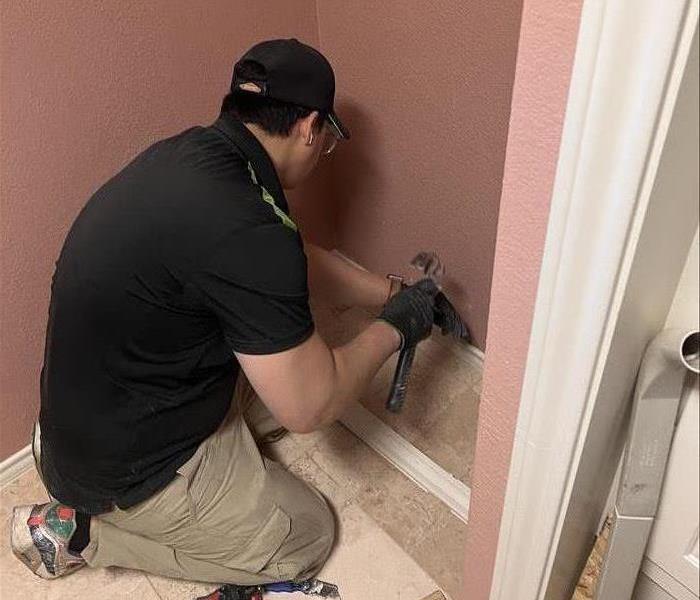 Whether you’re dealing with clean, grey, or black water, SERVPRO of East Arlington has the expertise and equipment to handle any situation.
Whether you’re dealing with clean, grey, or black water, SERVPRO of East Arlington has the expertise and equipment to handle any situation.
Water damage is a common problem that homeowners in the Arlington area face, and it can come from various sources. However, not all water damage is the same. Understanding the different types of water damage—clean, grey, and black water—is crucial for determining the appropriate response and ensuring your home is restored properly. In this blog, we’ll break down the three main categories of water damage, providing tips and insights to help you understand what each type means and how to handle it.
What Are the Types of Water Damage?
Water damage is categorized into three main types based on the level of contamination. Knowing which category you’re dealing with is important because it influences the cleanup process and the precautions you should take.
1. Clean Water Damage
Clean water damage is the least severe type and comes from sources that do not pose a significant risk of contamination. This type of water is free of harmful microbes and chemicals. Common sources of clean water damage include:
- Broken pipes or water supply lines
- Overflowing sinks or bathtubs with clean water
- Rainwater or melting ice and snow
Because clean water is uncontaminated, it is the easiest type of water damage to clean up. However, if left unattended for more than 24 to 48 hours, clean water can degrade into grey water due to microbial growth, making the damage more complicated to take care of.
2. Grey Water Damage
Grey water damage is a step up in severity. This type of water damage involves water that has been used and is now contaminated with chemicals, detergents, or microorganisms. Grey water does not contain fecal matter but can still cause considerable damage if not properly managed. Common sources of grey water damage include:
- Washing machine overflows
- Dishwasher leaks
- Toilet overflows without solid waste
- Sump pump failures
Grey water may contain bacteria and other microbes, so it requires more thorough cleaning and sanitizing than clean water. It is advisable to call a professional restoration company like SERVPRO of East Arlington to ensure all contaminated materials are removed and the affected area is sanitized to prevent further damage.
3. Black Water Damage
Black water damage is the most severe and dangerous type. It involves water that is highly contaminated and may contain harmful bacteria, chemicals, and pathogens. Black water typically comes from:
- Sewage backups
- Flooding from rivers or streams
- Overflowing toilets with fecal matter
- Long-standing water that has microbial growth
Black water damage poses a significant risk to humans and pets and requires immediate and comprehensive remediation. Failure to address black water damage quickly can result in severe property damage. Materials that have been contaminated, such as carpeting, insulation, and drywall, usually need to be removed and replaced.
How to Handle Different Types of Water Damage
When dealing with water damage, it's important to identify the type of water involved to take the appropriate steps. Here’s a quick guide:
- Clean Water: Quickly remove water with mops or wet vacuums and dry the area using fans and dehumidifiers. Monitor for any signs of deterioration in water quality.
- Grey Water: Wear gloves and protective clothing, and use a disinfectant during cleanup. Remove and replace any affected porous materials like carpet or furniture upholstery.
- Black Water: Immediately evacuate the affected area and contact a professional water damage restoration company like SERVPRO®. Do not attempt to clean up black water damage on your own, as it requires specialized equipment and expertise.
Trust SERVPRO for Your Water Damage Restoration Needs
By knowing the different types of water damage and the appropriate steps to take, you can better protect your home and valuables from the unexpected. Remember, acting fast and knowing what you’re dealing with are key to a successful restoration.
Whether you’re dealing with clean, grey, or black water, SERVPRO of East Arlington has the expertise and equipment to handle any situation. Contact us today!
How SERVPRO® Leads the Way in Storm Damage Recovery
9/11/2024 (Permalink)
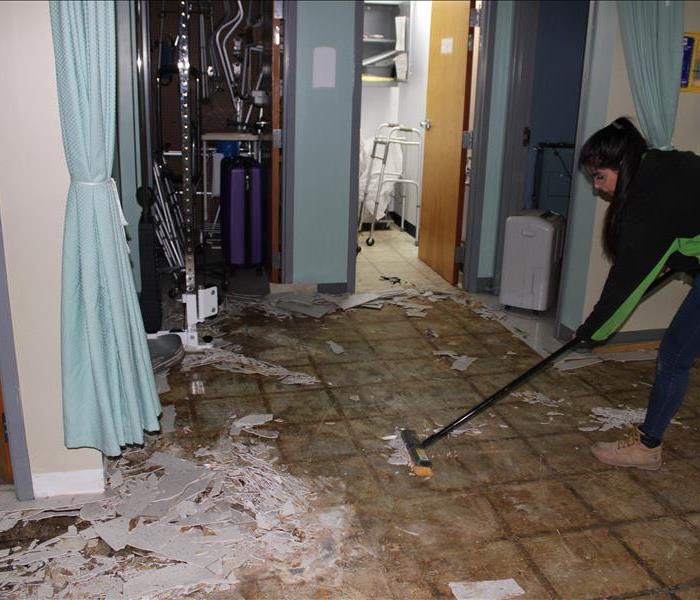 We delve into the essential role SERVPRO plays in storm damage recovery and why choosing a professional restoration service is crucial.
We delve into the essential role SERVPRO plays in storm damage recovery and why choosing a professional restoration service is crucial.
Storms can wreak havoc on homes and businesses in Arlington, Texas, leaving behind significant damage that requires immediate attention. SERVPRO® plays a pivotal role in storm damage recovery, providing comprehensive restoration services to help you get back on your feet quickly. In this blog, we’ll delve into the essential role SERVPRO plays in storm damage recovery and why choosing a professional restoration service is crucial for effective and efficient recovery.
Rapid Response and Assessment
When a storm hits, every minute counts. SERVPRO understands the urgency of the situation and offers a rapid response to storm damage. Our team is available 24/7, ready to assess the damage and create a tailored recovery plan. Quick assessment and action are crucial to minimizing further damage and setting the stage for a successful recovery.
Comprehensive Restoration Services
SERVPRO provides a wide range of restoration services that cover every aspect of storm damage recovery. From water extraction and drying to debris removal and structural repairs, our team is equipped to handle it all. We also specialize in mold remediation, ensuring that your property is not only restored but also safe from potential health hazards.
Advanced Technology and Techniques
Utilizing advanced technology and state-of-the-art equipment, SERVPRO ensures efficient and effective storm damage recovery. Our techniques are designed to thoroughly address damage and prevent future issues. This includes the use of industrial-grade dehumidifiers, moisture meters, and air movers to ensure complete drying and restoration of affected areas.
Expertise and Experience
With decades of experience in the restoration industry, SERVPRO has the expertise needed to tackle even the most challenging storm damage scenarios. Our team is trained and certified in storm damage recovery, adhering to industry standards and best practices. This expertise translates into high-quality restoration services that you can trust.
Insurance Assistance
Navigating insurance claims can be daunting after a storm. SERVPRO assists with the insurance process, working directly with your insurance company to streamline the claims process. Our detailed documentation and timely communication help ensure a smoother and more efficient claims experience.
Proven Results
According to a report by the Federal Emergency Management Agency (FEMA), effective mitigation strategies can reduce the costs of disaster recovery by up to 75 percent. SERVPRO’s comprehensive approach to storm damage recovery not only restores your property but also helps mitigate future risks, saving you time and money in the long run.
Community Commitment
At SERVPRO, we are committed to supporting our communities in times of need. Our local teams are dedicated to providing prompt and professional storm damage recovery services, helping to rebuild and restore communities after devastating storms.
Conclusion
SERVPRO plays a critical role in storm damage recovery, offering rapid response, comprehensive services, and expert assistance to ensure your property is restored to its pre-storm condition. Trust SERVPRO to handle your storm damage recovery with professionalism, expertise, and a commitment to quality. Contact us today to learn more about our storm damage recovery services and how we can help you recover quickly and efficiently.
Effective Techniques for Removing Soot and Smoke Residue from Surfaces
8/14/2024 (Permalink)
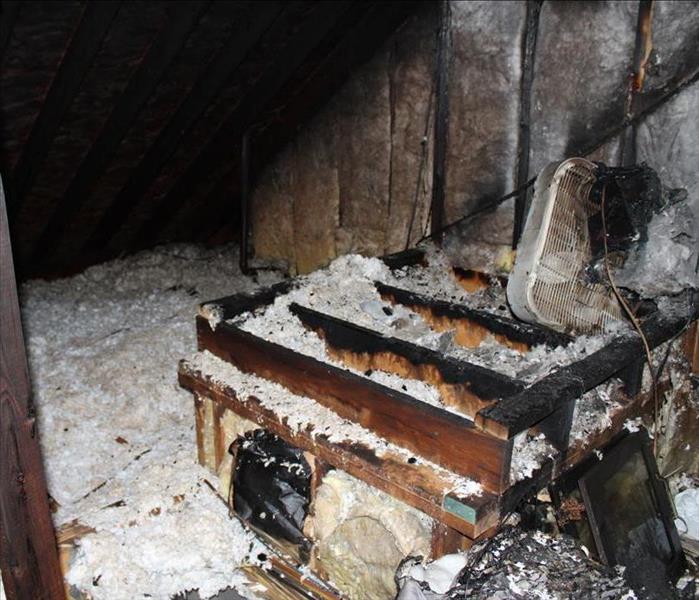 SERVPRO® provides essential tips and techniques for effectively removing soot and smoke residue from various surfaces.
SERVPRO® provides essential tips and techniques for effectively removing soot and smoke residue from various surfaces.
Experiencing a fire in your home in Arlington, TX, is traumatic, and dealing with the aftermath can be overwhelming. One of the most challenging aspects of fire damage cleanup is removing soot and smoke residue from surfaces. These residues not only cause discoloration and odors but can also pose health risks. In this blog, SERVPRO® provides essential tips and techniques for effectively removing soot and smoke residue from various surfaces.
Understanding Soot and Smoke Residue
What is Soot?
Soot is a black, powdery substance that results from the incomplete combustion of materials during a fire. It can cling to surfaces and penetrate porous materials, making it difficult to remove.
Effects of Smoke Residue
Smoke residue consists of fine particles and gases that settle on surfaces. It can cause:
- Discoloration: Staining walls, ceilings, and furniture.
- Odor: Persistent, unpleasant smells.
- Health Risks: Respiratory issues and skin irritation.
Essential Cleaning Techniques
Dry Cleaning Methods
Dry Sponges
Dry cleaning sponges, also known as chemical sponges, are highly effective for removing soot from walls and other flat surfaces. They are designed to lift soot without smearing it further.
- Use in a dabbing motion: Gently press the sponge onto the soot-stained area and lift it off without rubbing.
- Replace as needed: Once the sponge becomes saturated with soot, use a fresh one to avoid spreading the residue.
Wet Cleaning Methods
Mild Detergent Solutions
For surfaces that can tolerate moisture, a mixture of mild detergent and water can help remove soot and smoke residue.
- Mix the solution: Combine warm water with a few drops of mild dish soap.
- Use a soft cloth: Dampen a soft cloth with the solution and gently wipe the affected area.
- Rinse and dry: Follow up with a rinse using clean water and dry the surface thoroughly.
Specialized Cleaning Products
Degreasers
Heavy soot deposits may require the use of degreasers, which are formulated to break down tough residues.
- Apply as directed: Follow the manufacturer’s instructions for application and safety.
- Rinse well: Ensure the surface is thoroughly rinsed to remove any remaining cleaner.
Advanced Cleaning Techniques
HEPA Vacuuming
High-Efficiency Particulate Air (HEPA) vacuums are effective for removing loose soot particles from surfaces, especially carpets and upholstery.
- Vacuum gently: Use the vacuum with a soft brush attachment to avoid damaging delicate surfaces.
- Multiple passes: Make several passes over the affected area to ensure thorough removal.
Air Scrubbers
Air scrubbers help in removing airborne soot particles and improving indoor air quality. These devices filter out particulates, reducing the risk of recontamination.
Professional Help
Engage SERVPRO Experts
While some soot and smoke residue can be removed with DIY methods, professional help ensures a comprehensive cleanup. SERVPRO has the expertise and equipment to tackle even the most stubborn residues effectively.
Complete Restoration
Our team not only cleans but also restores surfaces to their pre-fire condition, addressing discoloration, odors, and any underlying damage.
Removing soot and smoke residue from surfaces is a critical step in fire damage restoration. Using the right techniques and products can make a significant difference in the outcome. Trust SERVPRO to provide professional, thorough cleaning and restoration services, ensuring your home is safe and clean. Contact us today for expert assistance in dealing with fire damage and its aftermath.
Understanding the Timeline: How Long Before Mold Develops in a Leaking Roof?
7/10/2024 (Permalink)
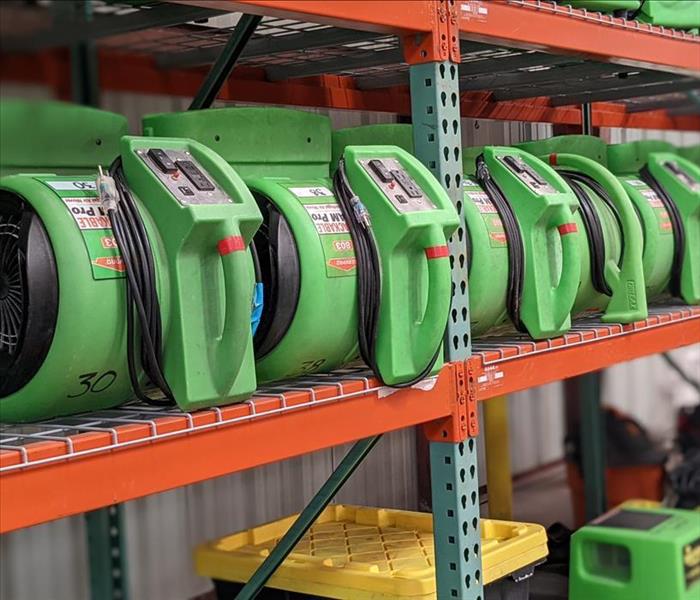 We explore the timeline for mold development in a leaking roof and provide insights into the factors that influence its growth.
We explore the timeline for mold development in a leaking roof and provide insights into the factors that influence its growth.
A leaking roof can lead to a host of problems for homeowners, including water damage, structural issues, and mold growth. While the visible signs of a leaking roof may be apparent, many homeowners wonder how long it takes for mold to develop in the wake of a roof leak. In this blog post, we'll explore the timeline for mold development in a leaking roof and provide insights into the factors that influence its growth.
Factors Influencing Mold Growth in a Leaking Roof
Moisture Levels:
The primary factor influencing mold growth in a leaking roof is moisture. When water penetrates through a roof leak, it creates damp conditions conducive to mold growth. The severity and duration of the moisture intrusion play a significant role in determining how quickly mold will develop.
Temperature:
Temperature also plays a role in mold growth, with warmer temperatures generally accelerating the growth process. In warmer climates or during the summer months, mold may develop more rapidly in a leaking roof compared to cooler temperatures or winter conditions.
Humidity Levels:
High humidity levels can exacerbate mold growth in a leaking roof, providing additional moisture for mold spores to thrive. Areas with elevated humidity levels, such as attics or poorly ventilated spaces, are particularly susceptible to mold growth following a roof leak.
Timeline for Mold Development in a Leaking Roof
While the timeline for mold development in a leaking roof can vary depending on various factors, including those mentioned above, here's a general overview of how quickly mold may develop:
Initial Water Intrusion:
Following a roof leak, water begins to infiltrate the affected area, saturating building materials such as insulation, drywall, and wood framing. Initially, there may be no visible signs of mold growth, but the conditions are ripe for its development.
Within 24-48 Hours:
Within 24 to 48 hours of a roof leak, mold spores may begin to germinate and colonize the damp surfaces. While mold growth may not be visible to the naked eye during this timeframe, the process has likely already begun, especially in areas with high moisture levels.
Within 48-72 Hours:
Between 48 to 72 hours of sustained moisture exposure, visible mold growth may become apparent on surfaces such as ceilings, walls, and attic spaces. Mold may appear as black, green, or brown spots and may produce a musty odor indicative of its presence.
Preventing Mold Growth from a Leaking Roof
Prompt Roof Repairs:
Address roof leaks promptly to prevent prolonged moisture exposure and mold growth. Hire a qualified roofing contractor to inspect and repair any damaged or deteriorated roofing materials.
Proper Ventilation:
Ensure adequate ventilation in attics and other enclosed spaces to promote airflow and reduce humidity levels. Use exhaust fans, roof vents, and soffit vents to facilitate ventilation and prevent moisture buildup.
Regular Inspections:
Schedule regular inspections of your roof and attic to detect and address potential leaks before they escalate into larger issues. Look for signs of water stains, discoloration, or mold growth, and address any issues promptly.
Mold development in a leaking roof can occur relatively quickly, especially under favorable conditions such as high humidity and warm temperatures. By understanding the factors influencing mold growth and taking proactive measures to address roof leaks and prevent moisture buildup, homeowners can mitigate the risk of mold damage and maintain a healthy indoor environment. If you suspect mold growth from a leaking roof, contact a professional restoration company like SERVPRO® for expert assessment and remediation services.
Why Smart Home Technology Can Be A Lifesaver Against Water Damage
6/12/2024 (Permalink)
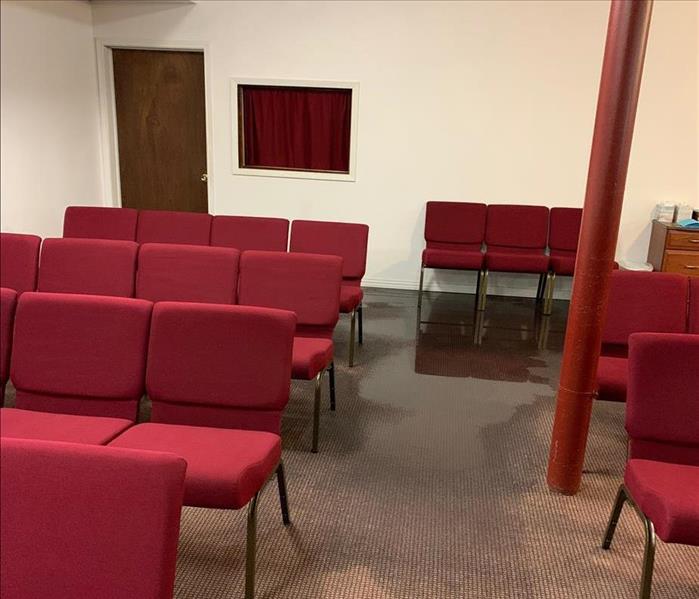 Incorporating smart home technology into your property can be a game-changer when it comes to protecting against water damage.
Incorporating smart home technology into your property can be a game-changer when it comes to protecting against water damage.
Technology has revolutionized the way we live, offering convenience, efficiency, and even safety enhancements. One area where technological advancements shine is in home protection, particularly against the threat of water damage. Smart home technology has emerged as a lifesaver, providing homeowners with innovative solutions to prevent water damage and mitigate its impact. Let's explore how integrating smart home technology into your property can help you protect your home against water-related disasters.
Smart Leak Detection Systems: Early Warning Against Water Intrusion
One of the most significant advantages of smart home technology is its ability to detect water leaks early, often before they escalate into major problems. Smart leak detection systems use sensors placed in key areas vulnerable to water damage, such as near appliances, under sinks, and around water heaters. These sensors continuously monitor moisture levels and can alert homeowners via smartphone notifications at the first sign of a leak. By providing early warning, smart leak detection systems empower homeowners to take immediate action to address the issue, potentially averting costly water damage repairs.
Wi-Fi Connected Water Shut-Off Valves: Instant Response to Emergencies
In the event of a detected leak, smart home technology offers another layer of protection with Wi-Fi connected water shut-off valves. These valves can automatically turn off the water supply to the affected area, preventing further water intrusion and minimizing damage. Additionally, homeowners can remotely control these valves via smartphone apps, allowing them to shut off the water supply from anywhere, even if they're away from home. This capability provides peace of mind and enables swift action in emergency situations, reducing the risk of extensive water damage.
Moisture-Sensing Smart Appliances: Proactive Defense Against Water Damage
Another innovative application of smart home technology is the integration of moisture-sensing capabilities into household appliances, such as washing machines, dishwashers, and refrigerators. These appliances use advanced sensors to detect abnormal levels of moisture, indicating potential leaks or malfunctions. Upon detection, these appliances can automatically pause their operations and alert homeowners to the issue, preventing water damage before it occurs. By proactively identifying and addressing moisture-related issues, smart appliances help homeowners avoid costly repairs and property damage.
Smart Home Monitoring Systems: Comprehensive Oversight of Your Property
To provide homeowners with comprehensive oversight of their property, smart home monitoring systems offer integrated solutions for monitoring various environmental factors, including temperature, humidity, and moisture levels. These systems use sensors placed throughout the home to continuously track environmental conditions and identify anomalies that may indicate water damage risks. With real-time alerts and data visualization features, homeowners can stay informed about their property's condition and take proactive measures to prevent water damage.
Leveraging Smart Home Technology for Water Damage Prevention
Incorporating smart home technology into your property can be a game-changer when it comes to protecting against water damage. From early leak detection to automated shut-off valves and moisture-sensing appliances, these innovative solutions empower homeowners to take proactive steps in preventing water-related disasters. By investing in smart home technology, you not only enhance your property's safety and security but also gain invaluable peace of mind knowing that your home is equipped to handle potential water damage threats.
Weathering the Storm: Safety Measures During Lightning Storms
5/14/2024 (Permalink)
As majestic as lightning may appear from a distance, its power and unpredictability make it one of nature's most formidable forces. Lightning storms can strike suddenly and with devastating consequences, posing serious risks to both life and property. In this blog, we'll explore essential safety measures to follow during lightning storms, ensuring the protection of yourself, your loved ones, and your home.
Understanding the Threat
Lightning is a powerful electrical discharge that occurs during thunderstorms, resulting from the buildup of static electricity within clouds. When this electrical charge is discharged, it seeks the path of least resistance to the ground, often striking trees, buildings, or other elevated objects in its path. Lightning strikes can cause fires, structural damage, and even fatalities, making it essential to take precautions when thunderstorms are in the forecast.
Safety Measures
- Monitor Weather Forecasts: Stay informed about weather conditions in your area by monitoring local weather forecasts and alerts. If thunderstorms are predicted, take proactive steps to prepare for the possibility of lightning strikes.
- Seek Shelter Indoors: When thunderstorms are imminent, seek shelter indoors in a sturdy, enclosed building. Avoid taking shelter in small sheds, picnic shelters, or other structures that do not provide adequate protection from lightning.
- Avoid Open Areas: If you are outdoors when a thunderstorm approaches, seek shelter immediately. Avoid open fields, hilltops, and other exposed areas where you may be the tallest object and at increased risk of being struck by lightning.
- Stay Away from Water: Water is an excellent conductor of electricity, increasing the risk of injury or death from lightning strikes. Avoid swimming, boating, or bathing during thunderstorms, and seek shelter indoors until the storm passes.
- Avoid Electrical Devices: Lightning can cause power surges and electrical fires, so it's essential to avoid using electrical devices during thunderstorms. Unplug appliances and electronics to prevent damage from lightning strikes or power surges.
- Wait for the All-Clear: After the last clap of thunder has sounded, wait at least 30 minutes before venturing outdoors. Lightning can strike from a distance of up to 10 miles away from the center of a thunderstorm, so it's essential to wait until the threat has passed entirely.
Lightning storms are a powerful force of nature that demands respect and caution. By following these safety measures during thunderstorms, you can reduce the risk of injury or damage from lightning strikes and keep yourself and your loved ones safe during inclement weather. Remember, when it comes to lightning, it's better to err on the side of caution and seek shelter indoors until the storm has passed completely.
Tips for Restoring Fire-Damaged Clothing
4/17/2024 (Permalink)
Experiencing a fire in your home can be a devastating event, affecting not only your property but also your personal belongings, including clothing. Fire-damaged clothing may seem beyond repair, but with the right approach, many items can be salvaged and restored to their pre-damage condition. In this blog post, we'll discuss how to safely handle and restore fire-damaged clothing to help you recover your wardrobe after a fire.
Assessing the Damage
Before attempting to restore fire-damaged clothing, it's essential to assess the extent of the damage. Inspect each item carefully for signs of charring, melting, or discoloration caused by heat and smoke exposure. Items that have been severely damaged may be beyond repair and should be discarded to prevent further contamination.
Removing Soot and Smoke Odors
Fire-damaged clothing often accumulates soot and smoke odors, which can be challenging to remove. Begin by gently shaking out the clothing to dislodge loose soot particles, taking care not to spread the soot further. Next, launder the clothing using a heavy-duty detergent specially formulated to break down soot and smoke residues. Adding white vinegar to the wash cycle can also help neutralize lingering odors.
Professional Dry Cleaning
For delicate or heavily soiled items, professional dry cleaning may be necessary to ensure thorough cleaning and restoration. Dry cleaning uses specialized solvents and techniques to remove soot, smoke odors, and other contaminants from fabric without causing damage. Be sure to inform the dry cleaner about the nature of the fire damage so they can take appropriate precautions during the cleaning process.
Air Drying and Deodorizing
After laundering or dry cleaning, air drying the clothing outdoors can help remove any remaining odors and freshen the fabric. Hang the clothing on a clothesline or garment rack in a well-ventilated area, avoiding direct sunlight, which can cause fading. For stubborn odors, place a bowl of activated charcoal or baking soda near the clothing to absorb odors naturally.
Inspecting for Damage
Once the clothing has been cleaned and dried, carefully inspect each item for any lingering damage or odor. Pay close attention to seams, zippers, and other areas where soot and smoke residues may have accumulated. If any items still show signs of damage or odor after cleaning, consider seeking professional restoration services to ensure thorough restoration.
In conclusion, while fire damage to clothing can be distressing, many items can be salvaged and restored with the right approach. By following these tips for safe and effective restoration, you can recover your wardrobe and minimize the impact of fire damage on your personal belongings. If you need assistance with fire damage restoration, including cleaning and restoring clothing, don't hesitate to contact the experts at SERVPRO of East Arlington for professional assistance tailored to your specific needs.
Career Opportunities at SERVPRO
8/15/2023 (Permalink)
Career Opportunities at SERVPRO
With 22 franchises in 6 locations throughout TN, FL, and TX, SERVPRO Team Nicholson is an exciting, diverse, innovative place to work. We foster positive company culture, offer competitive compensation packages, and prioritize community involvement. Come find out what it takes to be a part of our team!
Our Mission
Our mission is to be a proud, laser-focused team holding each other accountable while creating positive opportunities for our people and becoming the most efficiently run organization in the markets we serve.
We value honesty, reliability, relationships, trustworthiness, and authenticity! Our team develops and provides solutions; we are go-getters and carry a “bring it” attitude to our work environment. We listen and value each other’s thoughts and ideas and strive to bring them to life.
We are built on hard work, transparency, good business, and integrity. We believe, “You can’t go wrong doing the right thing.”
Bill Repsel, our Regional Administrator, shared his testimony on what it's like working for SERVPRO. He said, "Every day is a new day. It is an opportunity to serve others in our community in a time of need. We have an incredible team of people with great talent that strives to make a difference every day."
SERVPRO of East Arlington is proud of the work we do and is always looking for like-minded people interested in a rewarding career.




 24/7 Emergency Service
24/7 Emergency Service



